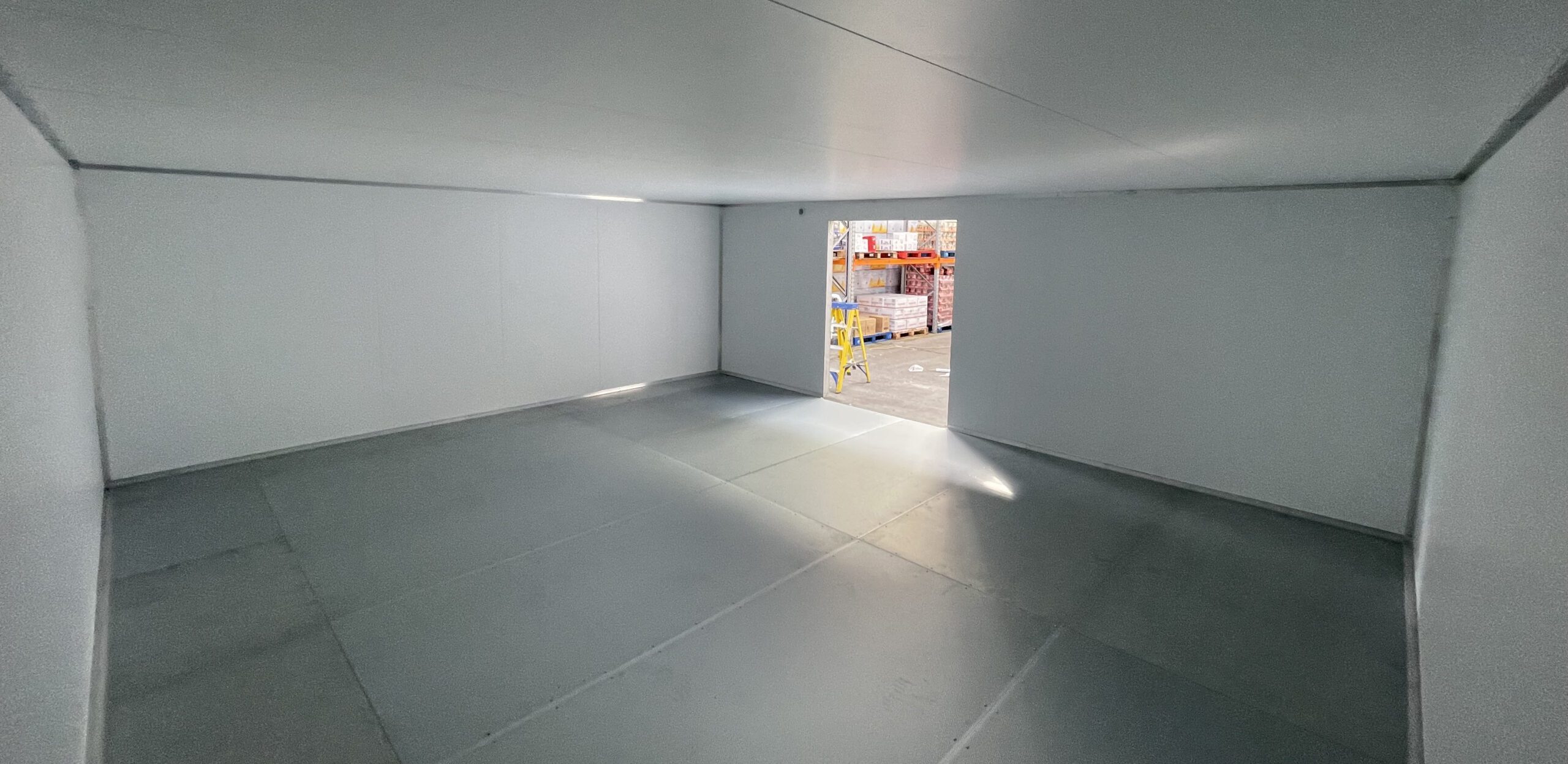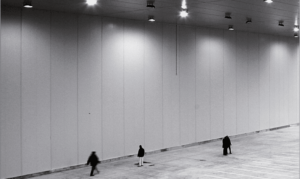Next day delivery
available
April 27, 2023 | MTCSS

Are you looking to build or invest in a cold room solution for your business, but aren’t sure about the components that make up a cold room? If so, you’re in the right place. The main components of your cold room’s construction include cold room panels, cold room doors, cold room flooring, and refrigeration systems.
MTCSS are the experts at everything cold storage, so we’ll help you understand these components further to ensure you’ve got the correct application for your business requirements.
To build a cold room bespoke to your requirements, you need to know about all the different components that you might require in your cold room. If you don’t know what components are required to create your cold room, how are you going to construct it? MTCSS are here to help.
Let’s explore cold room components further:
Whether you’re getting a contractor to install your cold room for you, or you’re installing it yourself, there is a specific way to construct your cold room – this involves beginning with the structure (the cold room panels, walls, and floors) and then moving onto supporting elements such as cold room doors and refrigeration systems.
The following cold room components are representative of a general cold room construction – each cold room will be bespoke to your individual requirements, so understanding that your cold room may require different parts to the below is key.
Cold Room Flooring
Your cold room floor comes first. Finding a suitable cold room flooring solution may seem confusing, but it’s actually relatively simple.
Once you’ve determined whether you require a floor (depending on whether you have a chiller cold room or a freezer cold room) if required, you should to choose an overlay to protect your cold room’s floor.
Overlays are typically a metal sheet that are fitted to foam injected base panels (flooring panels) to create a more sturdy, secure flooring solution for your cold rooms. They also help to prevent your base panels from splitting due to the moisture levels in your cold room.

Cold Room Panels
Cold room panels are an insulated panel system that forms the structure of your cold rooms. Designed for temperature-controlled environments and to guarantee high technical performance, cold room panels are an essential component to your cold room.
Replacing cold room panels when damaged is essential, as they contribute towards the level of insulation within your cold room. If the insulation within your cold room is sub-par, this could have a drastic affect on temperatures and therefore the products stored inside your cold room.
There are other important components relating to cold room panels – sealants and capping’s (ancillaries). Capping’s are used to finish the cold room panels in order to protect the edges and joints, and sealants are used to fill panel joints to form vapour barriers.
Cold Room Doors
Cold room doors and cold room door furniture – ensuring these are all suitable for your cold room requirements is paramount for an optimally functioning cold room.
Whether you require a hinged, sliding, personnel, or specialised cold room door you must also have cold room door gaskets, cold room door handles and cold room door heaters (if it’s a freezer cold room).
Your cold room door gaskets and handles work alongside your cold room door to ensure both staff safety and that your cold room’s temperature stays consistent. Gaskets contribute to the sealing of your cold room – preventing any external air from entering.
Door heaters are used to prevent your cold room door from freezing shut and can be positioned within the door gasket or on the cold room door’s frame. They operate as either low voltage using its own transformer, or mains fed through an RCD (residual current device) and are both powered continuously to achieve a consistent temperature.
Refrigeration Systems
Refrigeration systems within your cold rooms are used to achieve specific temperature ranges, depending on what the cold room is being used for.
Monoblock refrigeration units are refrigeration systems that fit though the wall (through wall) or through the ceiling (straddle) in your cold rooms and are suited to either chiller (+1°C / +8°C) or freezer applications (down to -40°C) to support your requirements.
Being responsible for your cold room’s temperature, your refrigeration systems are an extremely important component of your cold room that shouldn’t be overlooked.
Extra Cold Room Components
Now we’ve covered the main components of your cold room construction, lets discuss the additional components you can purchase to make your cold room bespoke to your needs.
Cold room shelving allows for improved storage space (ensuring your products are stored effectively so they don’t perish) in your cold rooms, are easily cleaned and suitable for a range of high-control industries such as the food or medical industry.
Pressure release valves should be added to your freezer cold room walls or ceilings to regulate the level of pressure within a system – preventing it from building higher than it’s supposed to, causing your cold room doors to open forcing it to lose temperature.
Ramps, lights and alarms are also useful components within a cold room. Ramps allow for easy access to your cold room if you require pallet or truck access, as well as if you have a step into your room. Lighting solutions, naturally, produce light into your cold room whilst preventing any heat gain.
Cold room alarms can help to protect both your cold room and your employees. Entrapment alarms sound when a button/cord is activated to prevent employees from getting stuck inside. Door sentry alarms sound when your cold room door is in the open position for too long, prompting it to be closed in order to save energy and temperature.
There are many other components that could be included in a cold room’s construction, these are just the most common components that are essential for any cold room installation.
All of the above cold room components, as well as an extensive range of cold room spares, are available to purchase on our shop today! Don’t see the part you’re looking for? Get in contact with our team today to discuss your requirements.
If you’d like more information on the components within a cold room, or you’d like support with some cold room spares, contact MTCSS’ experts today! Email us at spares@mtcss.co.uk, call us on 01886 833381 or fill in an enquiry form below!
April 27, 2023 | MCTSS